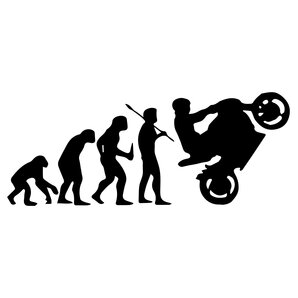
Hello Dear Followers!
I hope you like today's reflection.
I was thinking about Organizations Maturity levels, and during Agile Transformations there is a lot of repeated patterns. Even in different worlds and cultures, it happens exactly the same way. So I will share what I observed now with you.
Level Starter
- Agile dictatorship
- Dictates the flow
- Agile = new order & rules
- Change = Command & Control
- Priority = Productivity
- Human = Resources
- Structure: vertical high
They have still a high and strong hierarchy that commands and control everything. Stress is welcome as a "performance factor", and pressure is accepted as "motivation method".
In this organizations the Scrum Masters and Agile Coaches behaves like traditional managers. Very bad guys that are obsessed with velocity and they understand their role as a "sheriff".
For the managers, a "change process" is something that can be bought as a "canned solution". Humans are just resources to keep totally busy all the time.
Level Experienced
- Uses „agile“ as a „management tool”
- Agile = efficiency method
- Change = Team Improvement
- Priority = Velocity
- Human = Resources for Teams
- Structure: vertical
They have still a hierarchy that commands and control everything. Stress is accepted in difficult times, and pressure is also accepted as "motivation method".
In this organizations the Scrum Masters and Agile Coaches behaves like low level managers. They are obsessed with rules and metrics, and act like control officers. For them everything can be mesured, even Love, Freedom and Happiness.
For the managers, a "change process" is something that can be planned, designed, executed and verified. Humans are just resources that acts like "team pieces" that can be replaced, and re-assigned at will.
Level Awakening
- Conceives the social aspect of collaboration.
- Agile = Collaboration method
- Change = Overall Improvement
- Priority = be Competitive
- Human = Teams
- Structure: vertical low
They have still a hierarchy at low level that delegates a lot of decisions to the bottom, but still keeps the power to design and "drive the people". Business decisions are still taken by managers, and the customer is still a mythologic creature.
In this organizations the Scrum Masters and Agile Coaches behaves like Football Coaches. They are focused on the teams, and to make them performant. Additionally, they implement "continuous improvement".
(not bad huh?)
For the managers, a "change process" is everything that is related with "improvement". Humans are components to create productive teams. But the teams are still designed and allocated by managers.
Level Master
- Works on culture, as base ground of everything
- Agile = Relations and interactions
- Change = Learning
- Priority = Value
- Human = People
- Structure: cells
They have managers without hierarchy. Even employees can have better incomes than managers. These managers are there to serve and support the business process. Business decisions are taken by Business people, and the customer (or end user) is co-working with Teams.
In this organizations the Scrum Masters and Agile Coaches behaves like "Open minded teachers" They are focused on everybody, beyond teams. Their focus is to "facilitate the learning process at all level".
For the managers, a "change process" is a continuous transformation process that involves all actors, at all time and everywhere. People is the center of the scene and the teams can decide their work: where, with who, when, and how.
This is the place, where talents like to get old.
Level Nirvana
- Don’t talks never again about „agile” but “value”
- Flow with the Chaos
- Agile = ?? (is just a name, and the original was „adaptive“)
- Change = Evolution and Adaption
- Priority = Purpose
- Human = Human
- Structure: tribes
The fifth level of Organizations.
Here is where Agile dies.
These Organizations are "abandoning Agile". They conceive Agile as a "name". For them, Agility is a "new Paradigm".
They understood that Agile is not about Agile.
Agile is about Values.
Managers are replaced by "supporters". Business people are replaced by "Market explorers". Business decisions are driven by the Market, and the customer (or end user) is part of the Team.
Each Team itself, acts like a little startup.
In this organizations the Scrum Masters and Agile Coaches behaves like "Montessori teachers" They are focused on creating the context to enable people to work and create value.
A "change process" is just a natural reality that happens everywhere. Purpose is the center of attention, and the people can decide how to work, even without teams.
This is the place, where agilists likes to get old.
Level Tao
- …...
- …...
- …...
- …...
- …...
- …...
(if you don't know nothing about Taoism, you should take some time to read about)
https://en.wikipedia.org/wiki/Taoism
I wish you happy Flow...
Daniel





